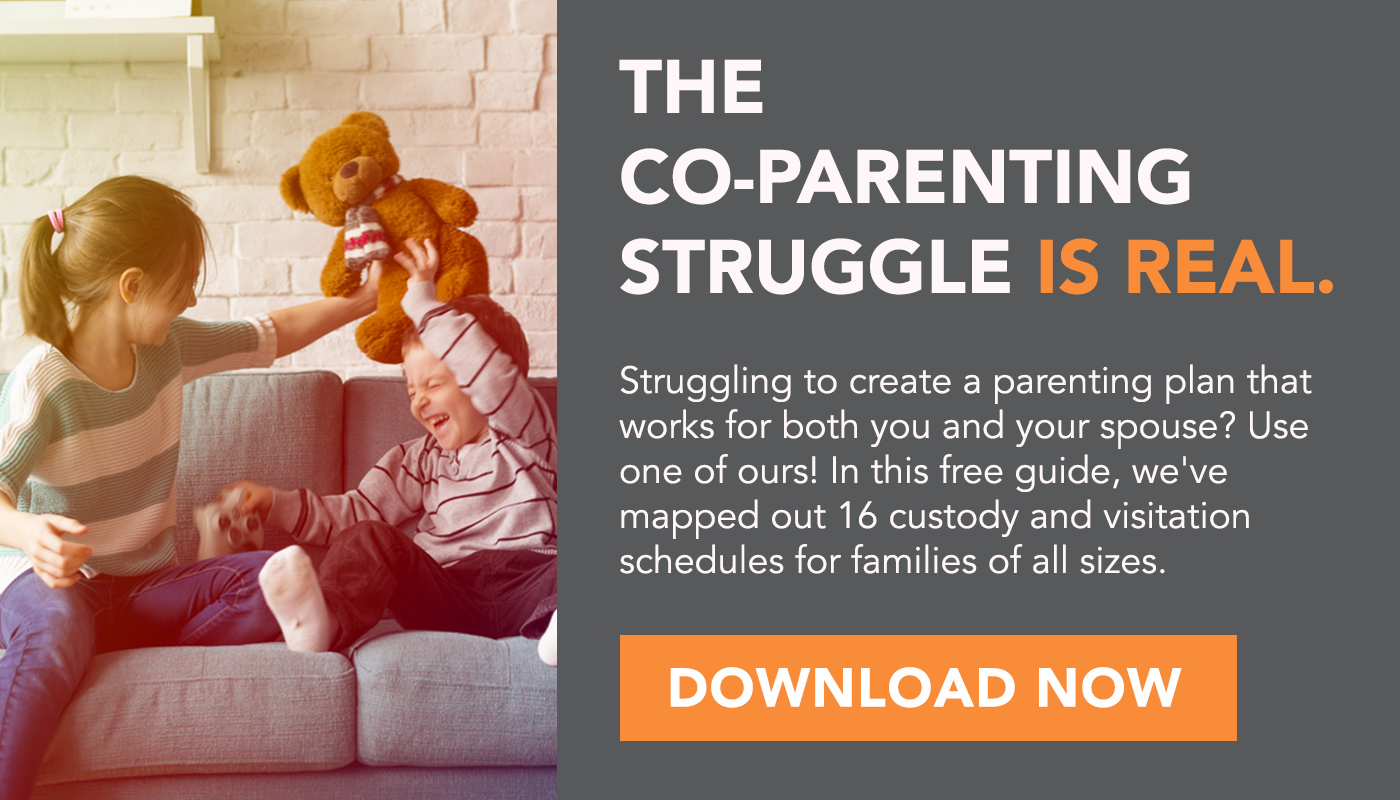
If you’re considering becoming a legal guardian, you’ve probably got a lot on your mind. While there are many reasons to become the guardian of a child or children within many different situations, it is an extensive process that involves many steps and (a lot of) paperwork.
To help guide you through this strenuous but often rewarding process, we’ve created a 4-step process that details the basic steps you’ll need to take from the beginning to the end of your guardianship process.
(Also, wondering about custody and visitation schedules? Download our free guide, "16 Custody and Visitation Schedules")
Step 1: Paperwork, Paperwork, Paperwork
The first thing to know before applying for guardianship is that you’ll have to fill out a lot of various paperwork. You should start by making a visit to your local Court Clerk’s office in the county where the child lives. Explain to the clerk that you’re trying to apply for guardianship, and they’ll help you get the proper forms.
This is also where the fees begin. Having responsibility for a child is expensive, and in the guardianship process, it starts immediately. The court will need fees for filing the forms. However, if you are on a limited income, you can ask the court for an application that could get them to waive the fee.
You’ll need a few different forms, which can vary by county and state. Here are some of the main ones:
The most important one is the Petition for Appointment of Guardian of Minor. Whoever is filing the petition is the Petitioner. You can propose yourself as the new guardian, or another person you believe is qualified. (Obviously, make sure whoever you nominate is willing and able to take on the responsibility).
Next, you’ll need the Child Custody Affidavit, on which you’ll tell the court where the child has been living for the past five years and what other parties may have legal interest in your petition.
You’ll need a form called the Affidavit or Petition for Appointment of Guardian of Minor Alleging Intolerable Living Situation, but only if your petition is happening because you believe the child is living in an intolerable situation. For this, you’ll need to describe the reasons why you feel that way.
Some courts will also require an Acceptance of Guardianship form.
You can file these forms by either mailing them to the appropriate Court Clerk or delivering them by hand. Make sure to keep a copy for yourself and make a second copy if you’re doing your own “notice.”
Step 2: Notifying All Parties
If you don’t already know, your “notice” is the second vital step of the guardianship process. It’s legally required that you notify certain people that you’re applying for guardianship. These are the required groups:
The minor child if he or she is 14 years or older and has not yet consented.
The parents of the minor child.
Any person who has cared for the child for the 60 days prior to filing.
Any other person as directed by the Guardianship Judge.
The actual giving of notice is the trickiest part, especially in cases where you are petitioning for guardianship because the parents are unfit for the responsibility. You need to serve each party with certified mail restricted delivery or a via process server or the sheriff’s office, which also means you’ll need proof that each party received notice.
This can be complicated, so some courts will charge you and do it for you to save you the trouble. Restricted delivery or return receipt mail means the person who receives it will have to open it, sign the document, then send it back to you or the court, which is almost impossible if the person in question is not wanting to be found, knowing that the process cannot continue without this step.
Sometimes, when you cannot locate the parents, the court will allow “service by publication,” meaning you publish the notice in a newspaper, but this is rare and is only used as a last resort.
Step 3: Court Hearing
The next step depends on how the parties react to the petition for guardianship and whether or not they all agree that it’s the right call. If it’s contested, it can be a much more difficult, lengthy, and expensive process, not to mention emotionally difficult.
Agreement
If all the parties are in agreement, it’s likely to be a fairly smooth process, with the court hearing being less formal. The Judge will need to approve the guardianship, and will look to make sure the documents are in order and decide whether the guardianship is in the child’s best interest. Even if all parties are in agreement, the judge has the final say.
Contested
If the parties do not all agree, it’s going to be a more difficult process; there’s no way around it. There will be a series of hearings, and we strongly recommend that you get the help of a qualified lawyer as you begin this process, as it can be emotionally draining and time consuming, especially by yourself. In some cases, the court can assign a lawyer to represent you, but be aware that you do not have the right to a lawyer in guardianship cases.
The child’s parents (or present guardians) do have the right to a free lawyer, so if you choose to go without one, you need to make sure you can present your case effectively.
Step 4: The Court’s Decision
The final step is out of your hands – you’ve filed your paperwork, given notice, and presented your case, and now you will await the court’s decision. As we’ve said, it’s up to the judge above all else, and for them, the highest priority is the best interests of the child.
In the event the court is uncertain, or in other cases, the court will appoint a temporary guardian. Otherwise, you’ll be petitioning for permanent guardianship, meaning you’ll be responsible for the child until they turn 18.
To learn more about guardianship or to talk to us about partnering with you during your own guardianship case, contact us today at 405.701.6376. For parents looking to manage the co-parenting world like a pro, download our free guide!
.png)

